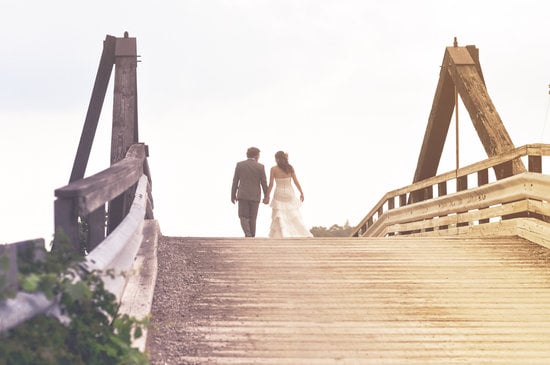Welcome to the ultimate guide on What to Include in Wedding Ceremony. Planning a wedding is an exciting and joyful time, and the ceremony itself is the heart of the celebration. From traditional elements like vows and ring exchanges to personalized touches that reflect your unique love story, there are countless details to consider when crafting the perfect ceremony.
The importance of planning each detail of your wedding ceremony cannot be overstated. This is the moment where you and your partner will publicly declare your love and commitment to each other, surrounded by your closest friends and family. Every element of the ceremony should be thoughtfully chosen to reflect your relationship and create a meaningful experience for all involved.
As you begin to plan your special day, we will guide you through the traditional elements of a wedding ceremony, how to personalize it, incorporating music and readings, choosing an officiant and crafting a custom script, symbolism behind unity ceremonies, involving loved ones in the ceremony, and finalizing all details to ensure a seamless experience for everyone. Let’s dive into this comprehensive guide on creating the perfect wedding ceremony that truly reflects who you are as a couple.
Traditional Wedding Ceremony Elements
When it comes to planning your wedding ceremony, traditional elements play a significant role in creating a meaningful and timeless experience. These elements have been passed down through generations and hold special significance for many couples. Here are some traditional wedding ceremony elements to consider including in your nuptials:
1. Vows: The exchange of vows is the heart of any wedding ceremony. Whether you choose to recite traditional vows or write your own, this is the moment where you express your love and commitment to one another.
2. Exchange of Rings: The exchanging of rings symbolizes the couple’s love and commitment to each other. This tradition dates back centuries and is a powerful symbol of unity and eternity.
3. Unity Ceremonies: These ceremonies, such as candle lighting or sand pouring, symbolize the joining of two lives into one. They are a beautiful way to visually represent the union of marriage.
Incorporating these traditional elements into your wedding ceremony can add depth and meaning to your special day. Whether you choose to follow them exactly as they are or put a modern twist on them, these traditions serve as a reminder of the profound commitment you are making to each other.
Remember that while tradition plays an important role in a wedding ceremony, it’s also essential to personalize the experience to reflect your unique love story. In the next section, we will explore ways to make your ceremony truly your own with personalized ideas and elements.
Personalized Ceremony Ideas
Your wedding ceremony is a special and unique opportunity to share your love story with your friends and family. Personalizing your ceremony can make it even more meaningful and memorable.
One of the biggest decisions you’ll need to make when planning your wedding ceremony is what elements to include to ensure that it feels personal, reflects who you are as a couple, and celebrates your love in a way that feels authentic. Here are some personalized ceremony ideas to help you create a wedding ceremony that truly represents you both.
First, consider customizing your vows. Your vows are the heart of your wedding ceremony and present an excellent opportunity to personalize the experience. Think about incorporating shared experiences, inside jokes, and promises specific to your relationship into your vows. You could also consider writing them together or separately for an element of surprise during the ceremony.
Another personalized option is including special readings that hold significance for you as a couple. Whether it’s an excerpt from a favorite book or poem, song lyrics, or even something written by a friend or family member, readings can add depth and emotion to your ceremony. Additionally, cultural traditions can be woven into the fabric of your wedding day, adding symbolic meaning and reflecting your heritage or beliefs.
| Element | Description |
|---|---|
| Customized Vows | Take time to create unique vows that reflect your relationship and shared experiences. |
| Special Readings | Select meaningful excerpts from books, poems, songs, or write-ups from loved ones. |
| Cultural Traditions | Incorporate customs or rituals that represent either of your heritages or values. |
These are just some ideas for personalizing your wedding ceremony; ultimately, the key is to choose elements that symbolize who you are as a couple and create an event representative of both of you.
Music and Readings
When choosing music for your wedding ceremony, consider selecting songs that hold special meaning to you as a couple. This could be a song that represents your relationship or one that captures the emotions of the moment. Popular choices include classical pieces, romantic ballads, or even up-tempo tunes that reflect your personalities. Additionally, incorporating live music, such as a string quartet or vocalist, can elevate the ambiance of the ceremony.
In terms of readings, couples have the opportunity to infuse their personalities into the ceremony through selected passages from literature, poetry, or religious texts. Consider choosing readings that resonate with both of you as individuals and as a couple.
If desired, you can also invite family members or close friends to participate by delivering meaningful readings during the ceremony. By thoughtfully selecting music and readings that reflect your love story and values, you can create an unforgettable atmosphere for both you and your guests on this special day.
Officiant and Ceremony Script
When it comes to selecting an officiant and crafting a ceremony script, there are several key considerations to keep in mind. First and foremost, it’s crucial to choose an officiant who aligns with your values and vision for the ceremony. Whether you opt for a religious leader, a civil officiant, or a close friend or family member to preside over the ceremony, their role is integral to the overall tone and atmosphere of the event.
Once you’ve chosen an officiant, the next step is to work together on creating a custom ceremony script that reflects your love story and beliefs. This may involve choosing meaningful readings or passages, incorporating cultural traditions, or crafting personalized vows that speak to your unique relationship. When deciding what to include in your wedding ceremony script, it’s important to consider elements that hold significance for both you and your partner.
In addition to the content of the ceremony script, logistical details such as the order of events, timing, and any special rituals should also be clearly outlined. Communicating these details with your officiant will help ensure that everyone is on the same page and that the ceremony runs smoothly. By collaborating with your chosen officiant and carefully structuring your ceremony script, you can create a meaningful and memorable wedding ceremony that truly represents you as a couple.
| Officiant | Ceremony Script |
|---|---|
| Choose someone who aligns with your values | Incorporate meaningful readings or passages |
| Consider different options (religious leader, civil officiant) | Craft personalized vows |
| Collaborate on creating custom ceremony script | Outline logistical details such as order of events |
Unity Ceremonies and Symbolic Gestures
When it comes to planning a wedding ceremony, couples often look for ways to incorporate meaningful and symbolic gestures that represent their love and commitment to each other. Unity ceremonies are a popular way to do just that, allowing couples to express their unity and the joining of their lives in a tangible way. There are several unique unity ceremony ideas to consider, such as sand ceremonies, candle ceremonies, or tree planting ceremonies.
Symbolism and Meaning
Each unity ceremony holds its own symbolism and meaning, making it important for couples to choose one that resonates with them personally. For example, a sand ceremony involves pouring different colored sands into a single container, symbolizing the blending of two lives into one. A candle ceremony typically involves lighting separate candles before using them to light a single candle together, representing the merging of two individuals into a unified partnership.
Incorporating Into Your Ceremony
If you decide to include a unity ceremony in your wedding, it’s essential to find a way to seamlessly incorporate it into your overall ceremony flow. This could involve choosing the right moment within the ceremony program, ensuring that all necessary elements (such as sand or candles) are prepared in advance, and communicating any specific instructions with your officiant and other participants.
Crafting Your Own Unity Ceremony
For couples who want to personalize their unity ceremony even further, there is also the option of creating their own symbolic gesture. Whether it’s through incorporating cultural traditions or crafting a completely new ritual that holds personal significance, there are endless possibilities for adding an extra layer of meaning to your wedding ceremony.
Ultimately, unity ceremonies and symbolic gestures can be a beautiful addition to any wedding ceremony. They serve as a visual representation of love and commitment while providing an opportunity for couples to express their unique bond in front of their loved ones.
By carefully selecting a unity ceremony that holds personal significance and integrating it thoughtfully into your overall wedding program, you can create an unforgettable experience that truly reflects your relationship and sets the tone for your future together.
Involving Family and Friends
When planning your wedding ceremony, involving family and friends can add a special and meaningful touch to the occasion. From honoring loved ones who have passed away to having them play a role in the ceremony, there are various ways to include your nearest and dearest in this important event.
Honoring Loved Ones
One way to involve family and friends in your wedding ceremony is by honoring loved ones who are no longer with you. This can be done through a special moment of remembrance, such as lighting a candle or displaying photos of those who have passed away. Additionally, you may choose to incorporate their favorite flowers or music into the ceremony as a tribute to their memory.
Roles for Family and Friends
Another way to involve loved ones is by giving them specific roles in the ceremony itself. This could include asking family members to do readings, serve as ushers, or even officiate the wedding if they are ordained. It’s important to consider the personalities and talents of those close to you when assigning these roles, ensuring that they feel honored and comfortable with their responsibilities.
Creating Balance
While involving family and friends in your wedding ceremony can add sentimental value, it’s essential to strike a balance between tradition and personalization. You may want certain elements of the ceremony to remain traditional while incorporating personalized touches that reflect your unique relationship. Open communication with family and friends about your vision for the ceremony will help ensure that everyone feels included while respecting your wishes.
By carefully considering how to involve family and friends in your wedding ceremony, you can create an inclusive and heartfelt experience for everyone involved. From honoring loved ones who are no longer with you to giving special roles to those who are present, these personal touches will make your ceremony truly unforgettable for both you and your guests.
Finalizing Ceremony Details
In conclusion, planning your wedding ceremony is an intricate process that involves a delicate balance of tradition and personalization. It is essential to consider each detail carefully in order to create a meaningful and memorable experience for you and your guests. From traditional elements like vows and ring exchanges to personalized touches such as customized readings and cultural traditions, there are numerous options to consider when deciding what to include in your wedding ceremony.
One of the most important aspects of finalizing your ceremony details is ensuring that everything runs smoothly on the big day. This includes considering logistics such as seating arrangements, the order of the processional, and any special accommodations for guests. By taking the time to carefully plan these details, you can ensure that your ceremony will be both seamless and meaningful.
Ultimately, no matter which elements you choose to include in your wedding ceremony, it’s essential to make sure that they reflect the unique love story and personalities of you and your partner. Whether you opt for a traditional ceremony with a few personalized touches or decide to create a completely bespoke experience, remember that your wedding is a celebration of your relationship – so make sure every detail reflects that.
Frequently Asked Questions
What Should a Wedding Ceremony Consist Of?
A wedding ceremony typically consists of several key components, including the processional, the exchange of vows and rings, a reading or speech, the pronouncement of marriage, and the recessional. These elements are essential in creating a meaningful and memorable ceremony for the couple and their guests.
What Elements Are Required for a Wedding Ceremony?
The required elements for a wedding ceremony include the presence of an officiant to legally marry the couple, the exchange of vows and rings as symbols of commitment, and the signing of the marriage license. These components are necessary to fulfill legal requirements and ensure that the marriage is officially recognized.
What Are the 5 Elements of a Wedding?
The five key elements of a wedding traditionally include the processional, during which the wedding party enters; the exchange of vows between the couple; the giving and receiving of rings as a symbol of their commitment; any readings or speeches from family members or friends; and finally, the pronouncement of marriage by the officiant before the recessional concludes the ceremony.
These elements come together to create a beautiful and meaningful celebration of love and commitment.

I have been involved in marriages for over 20 years helping couples and singles understand more about them.





